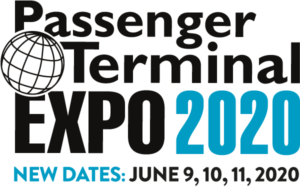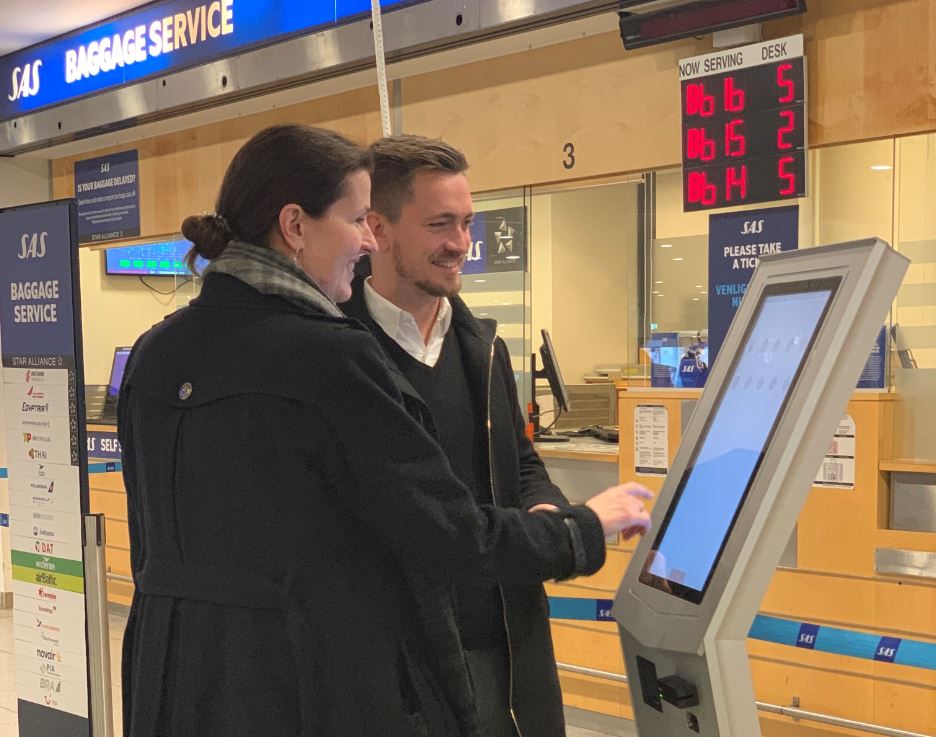Louise Brix-Hansen, head of airport optimization, and Jonathan Vincentz, optimization and project manager, Copenhagen Airports, share how an innovative bag-tag locator has significantly improved the customer experience, ahead of their presentation at the forthcoming Passenger Terminal CONFERENCE.
What is your presentation about?
Our presentation introduces an innovative airport-funded digital baggage tracking tool, developed with and offered to ground handlers at the airport arrival hall at no charge. Ground handlers’ customer service, in person or self-service, can now search online in real time for a specific bag tag to see if, when and where it has been scanned in CPH. The goal is to avoid passengers leaving without their baggage in cases where it is actually present. This year, the system has located more than 20,000 bags (32% positives), causing a significant reduction in mishandled baggage reports, and thereby improving the passenger experience.
Why did Copenhagen Airport need a digital baggage tracking tool? Was it in response to IATA 753?
Before the implementation of the baggage tool, ground handlers were unable to see if a specific piece of baggage had arrived in CPH. Therefore, when passengers went to the baggage service counter, the response was to note the address of the passenger, send the passenger home, and then send the baggage by courier when it showed up. Back then, it was generally assumed that the baggage was short-shipped, and would arrive with the next plane. However, we had a suspicion that sometimes passengers were unable to locate baggage that had actually arrived in CPH, because it had been unloaded at the wrong belt, it had encountered a delay during unloading, or simply because the passengers sometimes did not recognize their own bags. In those cases, we thought we may be able to pair the passenger with his/her bag, creating a better passenger experience, and saving airlines the cost of the courier services.
Therefore, the baggage tool was not a direct response to IATA 753, but the systems may be the foundation for further work. With a scanner point earlier in the process (e.g. unloading from aircraft) possibly through RFID tags we may be able to achieve what IATA 753 dictates, without compromising ground handler KPIs.

Tell us about the digital baggage tracking tool. How long did it take to create? How does it work?
The tool has been developed to register all incoming baggage headed for either transfer or offloading. It consists partly of scanners situated at the unloading belts, the transfer belt and the arrival belts, and partly of a website for ground handlers to use. When scanning a passenger’s bag-tag slip (or bingo tag), the system will immediately tell if the bag has been scanned in CPH. CPH has invested in the scanners and developed the system, and provided all ground handers with access to the system free of charge.
The system was developed in close collaboration with the ground handlers. CPH acknowledges the responsibility of being an infrastructure provider, and that all guests here are a shared responsibility between airlines, ground handlers and airport. CPH also acknowledges that ground handlers are the real experts in ground handler needs, and rather than building a tool and asking ground handlers to use it, we built it based 100% on the ground handlers’ needs. The CPH priority was to deliver a usable product that would be adopted and widely used, rather than having to be the one coming up with the great solutions. So based on a humble approach, daily correspondence and prototype testing, the administration part of the system was built, tested and fully implemented in four months. All handlers were now able to access the database with registered bag tags, regardless of airline or handler arrangements. The data is saved for 10 days, in order to minimize the risk of duplicates, as bag tag numbers are reused every so often. The system provides only the bag tag number, and thus no address or other personal information (which would be tracked via, for example, World Tracer) is displayed, which could raise GDPR concerns.
Can the 32% positives be improved? How?
The system was developed in Q3 and Q4 2018. In 2019, the system conducted about 65,000 searches for missing baggage, and established that around 21,000 of these presumed-missing bags were actually already in CPH and, as a, consequence handed over to the happy passengers. As the passenger assumes that the bag is missing when he/she enters the counter, 21,000 of 65,000 (approximately 32%) is a fairly high number. The remaining 68% of the searches are actually short-shipped, and should follow the same procedure for courier shipment when arrived at CPH.
In that light, the 32% is not the success criterion. While it reflects an impressive number of bags and now unnecessary courier shipments, it is a function of various factors: how many bags are short-shipped, how many bags are somehow mishandled locally, how many passengers cannot find their own bags, etc. If there were zero ground handler mishandlings or delays, and if 100% of passengers could recognize their bags, the system would show 0% positives. But has the system failed then? No. The system simply helps minimize the consequences of busy operations, human nature and wrongly labeled baggage shipments.
What should be improved is the reading rate. Currently, the system reads about 95-97% of all incoming bags, with its first datapoint at the offloading belt. Outgoing bags must be 100%, so that the bags reach the correct plane, but incoming has traditionally been less important to scan (up until IATA 753), as it has reached its final destination. There are several reasons for the 95-97%: some incoming bags have damaged or missing bag tags (as opposed to the outgoing, with fresh tags), and the offloading belts prioritize speed over separation between bags. But if the bags are not separated, the tags can be caught between bags so the scanners cannot read them. The latter can be fixed if prioritized by belts going at a different speed, but has not been prioritized in this case.

What challenges remain regarding tracking baggage throughout the passenger journey?
To fully comply with IATA 753, CPH would need to scan 100% of the baggage at offloading from the plane. This would have to be done manually, as there is no realistic scenario where the required barcode scanners would be implemented at all ramps (due to weather, shape, cost, maintenance, etc). Scanning all bags from an A380 manually, while 600 passengers are waiting at the baggage claim, is also not realistic, as it would dramatically impact the delivery time and a long list of KPIs.
However, the day the world fully implements mandatory RFID tags in bag tags globally, smaller scanners can be mounted on offloading ramps, and the system will be able to register an even earlier datapoint. This would also suffice for IATA 753 in terms of offloading registration.
But through collaboration we have taken a good step in creating a shared platform with generic data for free usage for ground handlers and airlines, while dramatically improving both passenger satisfaction and decreased courier costs.
 Copenhagen Airport’s Louise Brix-Hansen and Jonathan Vincentz will present ‘How an innovative bag-tag locator significantly increased customer experience’ in the Management & Operations stream of the Passenger Terminal CONFERENCE. The full conference program can be found here.
Copenhagen Airport’s Louise Brix-Hansen and Jonathan Vincentz will present ‘How an innovative bag-tag locator significantly increased customer experience’ in the Management & Operations stream of the Passenger Terminal CONFERENCE. The full conference program can be found here.

